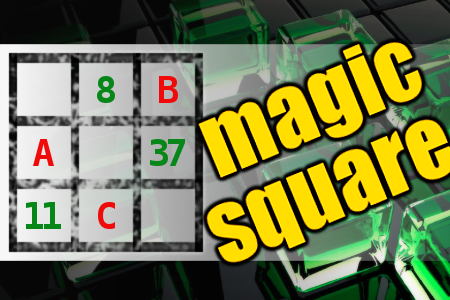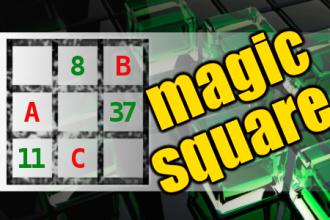MAGIC SQUARE: Calculate A+B*C
The aim is to place the some numbers from the list (8, 11, 12, 13, 15, 16, 37, 41, 42, 89, 95) into the empty squares and squares marked with A, B an C. Sum of each row and column should be equal. All the numbers of the magic square must be different. Find values for A, B, and C. Solution is A+B*C.Correct answers: 1
#brainteasers #math #magicsquare

2 Government Mechanical Engineers...
Bill and Bob, two Government mechanical engineers, were standing at the base of a flagpole, looking up.
A woman walked by and asked what they were doing.
'We're supposed to find the height of the flagpole', said Bob, 'But we don't have a ladder.'
The woman said, 'Hand me that wrench out of your toolbox.'
She loosened a few bolts, then laid the pole down.
She then took a tape measure from their toolbox, took a measurement and announced, 'Eighteen feet, six inches' and walked away.
Ray shook his head and laughed.
'Ain't that just like a 'Miss-know-it-all' woman?' he said.
'We need the height and she gave us the length!'
Bob and Ray are still working for the Government.

